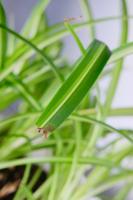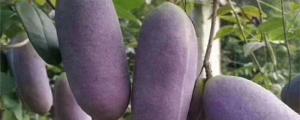Introduction
Plants are living organisms that need water to grow and survive. However, they also face the challenge of losing water through evaporation. To survive in harsh environments, plants have come up with various strategies to prevent water loss. In this article, we will explore some of these strategies in detail.
Cuticle
The cuticle is a waxy layer that covers the outer surface of leaves and stems. This layer acts as a barrier to prevent water loss through evaporation. The cuticle is made from a variety of substances, including waxes and fatty acids, and can vary in appearance and thickness between different species of plants. Generally, plants that live in dry environments have thicker cuticles to prevent water loss, while plants in wetter environments have thinner cuticles to allow for better gas exchange.
Stomata
Stomata are small pores on the surface of leaves and stems that allow for gas exchange between the plant and the environment. These pores are surrounded by two specialized cells, the guard cells, which regulate the opening and closing of the stomata. When water is abundant, stomata can open wider to allow for more gas exchange. However, in dry environments, stomata need to be tightly controlled to prevent excessive water loss. Plants have evolved various mechanisms to regulate stomata, such as producing hormones or responding to changes in light intensity.
CAM Photosynthesis
Crassulacean acid metabolism (CAM) is a specialized form of photosynthesis that some plants have evolved to survive in dry environments. CAM plants take in carbon dioxide at night when temperatures are cooler and the humidity is higher, and then store it as an acid in specialized cells. During the day, stomata can remain closed to prevent water loss while the acid is used to fuel photosynthesis. This allows the plant to conserve water during the day while still being able to carry out photosynthesis.
Root System
The root system is one of the most important adaptations for preventing water loss in plants. In dry environments, plants often have extensive root systems that can reach deep underground to access water sources. Some plants also have specialized roots, such as taproots or rhizomes, that can store water and nutrients for use during dry periods. Plants can also adjust their root systems to take advantage of areas with higher moisture content, such as near riverbanks or in areas with high groundwater levels.
Conclusion
Plants have evolved various mechanisms to prevent water loss and survive in harsh environments. These mechanisms include the cuticle, stomata, CAM photosynthesis, and the root system. By understanding these adaptations, we can learn more about how plants are able to thrive in a wide range of conditions and how we can use these adaptations to improve crop yields and conserve water resources.

 how many times do yo...
how many times do yo... how many planted tre...
how many planted tre... how many pine trees ...
how many pine trees ... how many pecan trees...
how many pecan trees... how many plants comp...
how many plants comp... how many plants can ...
how many plants can ... how many plants and ...
how many plants and ... how many pepper plan...
how many pepper plan...
































